Graffiti in Zagreb: A Cultural Landmark
February 4, 2022 - The Croatian capital Zagreb is abundant in graffiti ranging from quickly scrawled tags to large, colourful murals. Here is a look into the cultural significance of graffiti in Zagreb, including notable street artists, street art destinations, and its impact on the city's culture.
Zagreb is home to a few notable graffiti artists, recognized both nationally and internationally for their work, including OKO, Lonac, Lunar, Chez 186, Bare & Modul, and more. These artists all work under pseudonyms and display a signature style amongst their artwork.
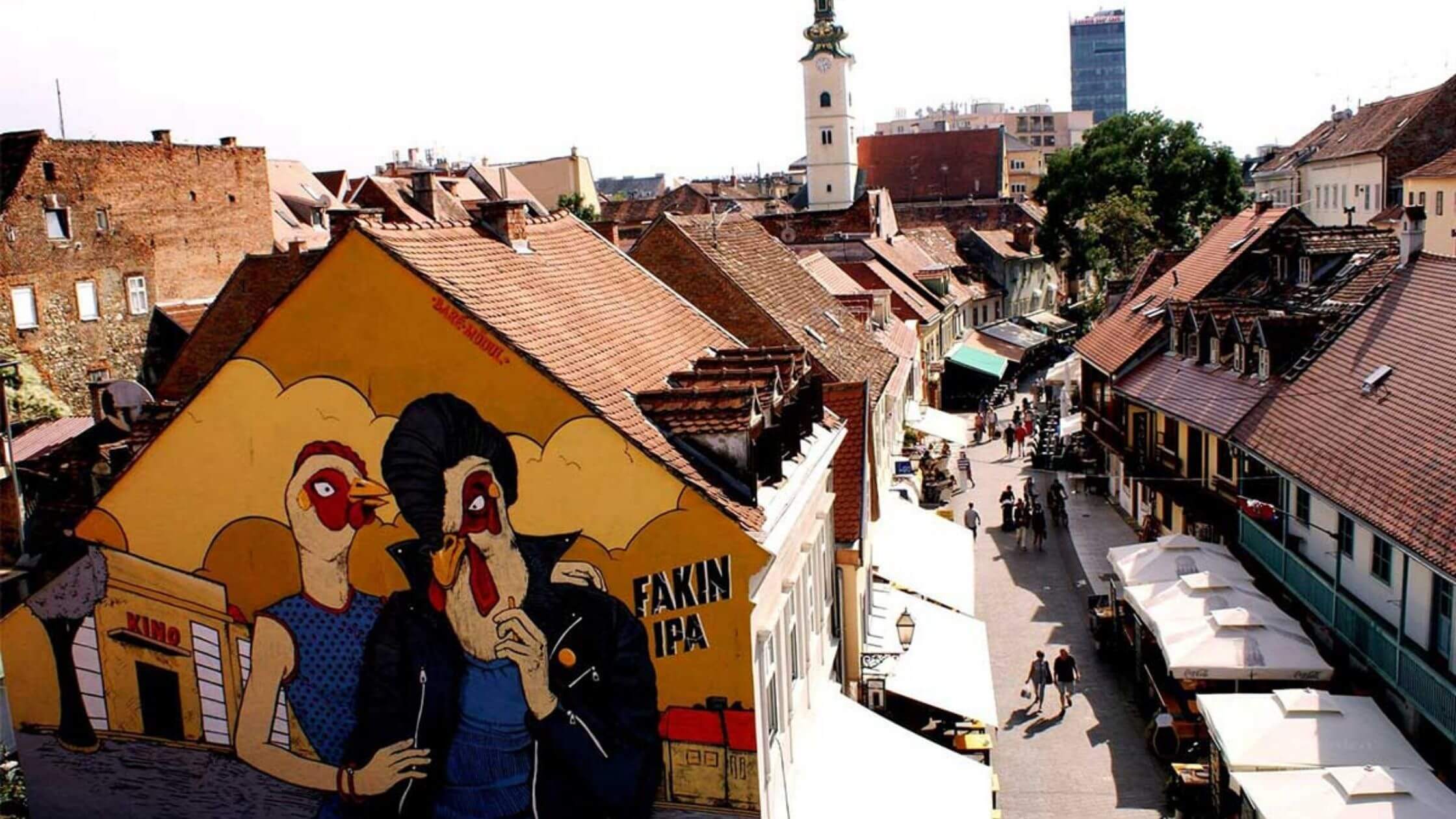
Bare & Modul: Fakin, painted for the Medvedgrad brewery. Photo: Bare & Modul
A fascinating characteristic shared by these artists is their chosen pseudonyms and how they symbolically represent themselves as artists as well as their work. For example, OKO (Croatian for “eye”) symbolically stands for one’s view of the world. The artist’s signature drawn eye, has visually represented the “inner eye” the artist believes we shall all use to look at the “depth behind everything and everybody”, rather than the “shallow image on the first glance,” ever since its debut appearances on Zagreb facades back in 2005.
In 2015, OKO’s 90 metre-long mural, Open My Eyes That I May See, was made as the adornment for the west-facing wall of Zagreb’s Museum of Contemporary Art. The artist has stated that: “Fluidity of street art is an excellent exercise in letting go. It cures you from having to own either material goods or spiritual achievements. It keeps you fresh because you have to keep creating”.
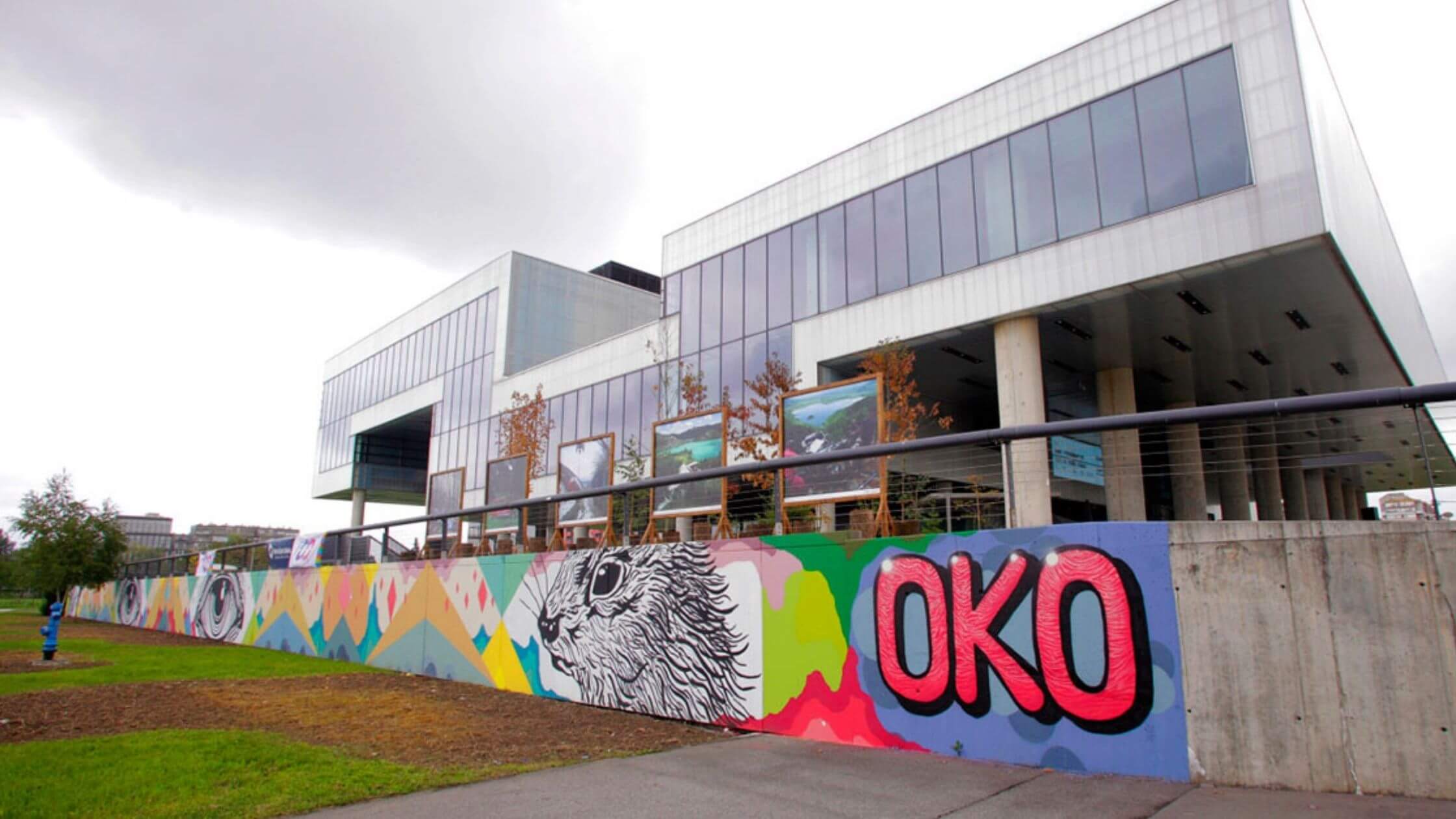
OKO: Open My Eyes That I May See, Museum of Contemporary Art. Photo: Kristijan Smok
Aside from the elaborate murals of the street artists, there is an abundance of textual graffiti, taking the form of mostly name-tags or sentences quickly scrawled onto walls. It would seem that amongst every public building in the city, there can be at least one of such phrases found on its walls, usually relating to themes of society, philosophy, politics, sport, relationships, money and work - to the mockery of writing on walls itself:
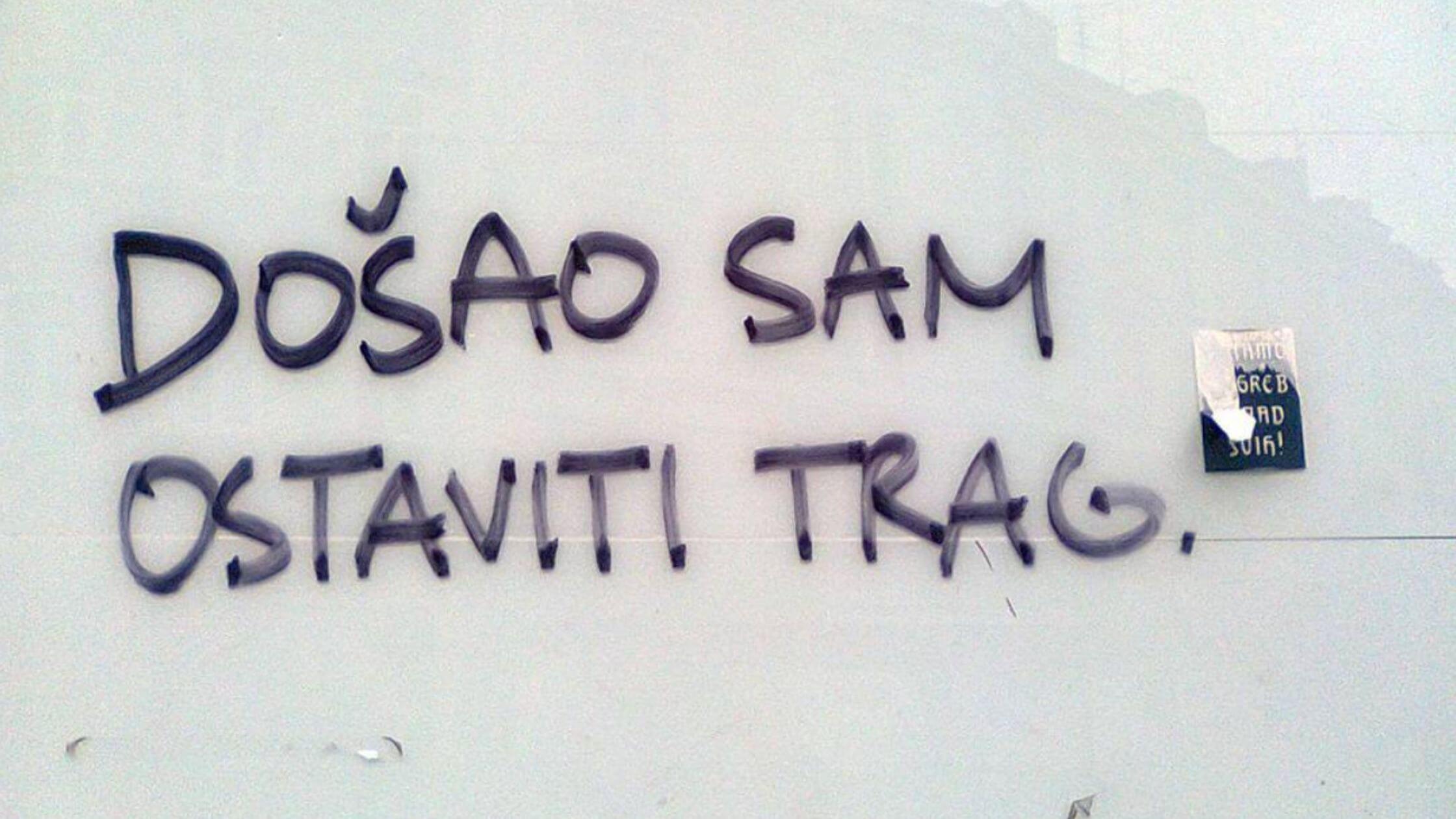
“I came to leave a trace” Indeed you have! Photo: ZAGREBAČKI GRAFITI/Instagram
All in all, they are communicated in a similar dry, sarcastic sense of humour, a display of Zagreb witticism. They have been acclaimed as a captivating and amusing way of expressing statements about society and other common themes, in such a way that it has become an element of youth culture.
Graffiti in Zagreb takes place mostly on privately or publicly owned property. However, many graffiti artists are given the chance to express their art in so-called “street art museums”. Namely, the Branimirova Graffiti Hall of Fame, established in 1999 on Branimirova Street and renovated in 2010 when 80 artists decorated the wall along Branimirova between the main railway station and the main bus station. Or the Zagreb Student Centre, with its endless blank walls for artists to showcase their work - it has received praise as a great open-space showroom of street art murals.
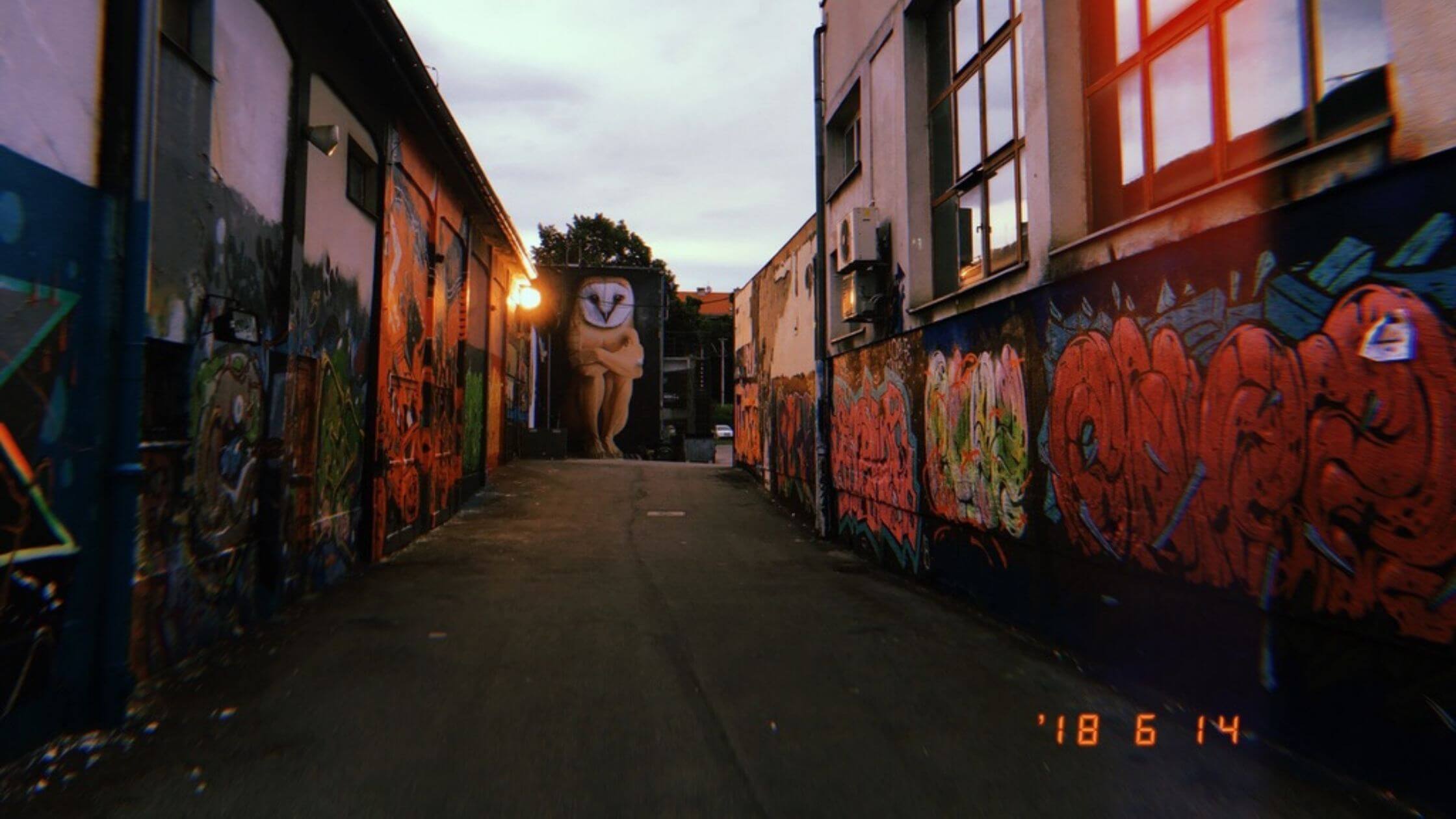
Inside the pathways of the Zagreb Student Centre. Photo: Vivi Albert
Yet, in midst of the praise, graffiti in Zagreb is still met with controversy over aspects such as its bold, striking appearance and the notion that it should not belong in public areas with historic significance, let alone privately owned buildings, as well as the belief that graffiti is an act of delinquency and a reason for youth to spread messages of disorder and provocation - which gives prominence to the boundary between art and vandalism that seems to exist within the art form. Graffiti in Zagreb has also faced controversy for its contribution to spreading messages of hate and antagonism, particularly fascism and xenophobia. But above all, graffiti has also been under fire of intolerant opinion of it not belonging on public display at all, regardless of whether it has been consented to, which boils down to merely an act of close-mindedness towards the art form as a whole. Regardless of where one stands concerning the polarising opinions surrounding the graffiti of any city, one can’t argue with the fact that it leaves an impact on its culture and is thus of significance to the city to some degree.
Graffiti in Zagreb has received praise not only for its artistic merit, but for being a major part of the city’s culture, from natives and tourists alike. Travel blogs such as Time Out are recommending Zagreb street art as a must-see in the city. There is even a street art tour, Meet Street Art(ist), the first and only street art tour in Zagreb, guided by street artists and other people involved in the street art scene in which one can learn about street art culture, meet street artists, visit galleries, and the unique Art Park, conjured by street artists as a space to display their murals and host workshops and events in a now popular “hang out” spot.

Wall in Zagreb Art Park. Photo: Fred Romero/Flickr
And for street artists, graffiti acts as personal guidance. To Chez 186, graffiti provides “financial safety and personal satisfaction, peace, and happiness above all”. To Šumski, each of his works is “one step towards something that doesn’t end. Each of these steps makes me who I am”. To Lonac, it’s a personal grounding: “For me, street art is a creation on the street. The work which you do belongs to you, everyone, and to no one. You can not sell it. It is a piece of the facade and that’s it”. To OKO, her art is a way of freedom and self-expression and, as she humorously puts it, “no meeting with curators or media, or anyone you need to explain your brain [to], except maybe cops if they catch you”.
To read more about Croatian arts and culture, check out TCN’s dedicated lifestyle page.
PHOTOS: Five Amazing New Murals Vukovar Street Art 2020
Sunday, 6 September 2020 – The Vukovar street art 2020 event VukovArt has just finished. Here are the five fantastic new works its left in the colourful Slavonian town.
The paints have dried, the scaffolding has been removed and all but the last few organisers have set off home. But, though VukovArt, the annual Vukovar street art 2020 has finished, the paintings from this year will remain.
These wonderful new works join a spectacular series of paintings which decorate the town, thanks to previous editions of VukovArt (you can check them ALL out on this link). Residents of the town now live their everyday lives among these incredible pieces of public art.
Here's a look at the Vukovar street art 2020 collection and a little from some of the artists who've made them.
OKO (Croatia)
Because he’s Mister Strength, Courage and Health
Human bodies, dressed in Victorian finery, topped with the heads of animals and, especially, birds; OKO's intricate and sometimes sinister designs have been seen at Zagreb’s Museum of Contemporary Art, Victoria and Albert Museum in London, the European Parliament in Brussels and in more proletarian spaces such as Zagreb’s Medika club and Theatre &TD. Her murals are often similar, only produced on an industrial scale.
"I chose to paint a bear because this animal often symbolises amazing strength and endurance," OKO told TCN. "When they invited me to paint in Vukovar it seemed like best possible symbolism for a city that endured so much and yet which still stands strong.
Boogie (Germany / Switzerland)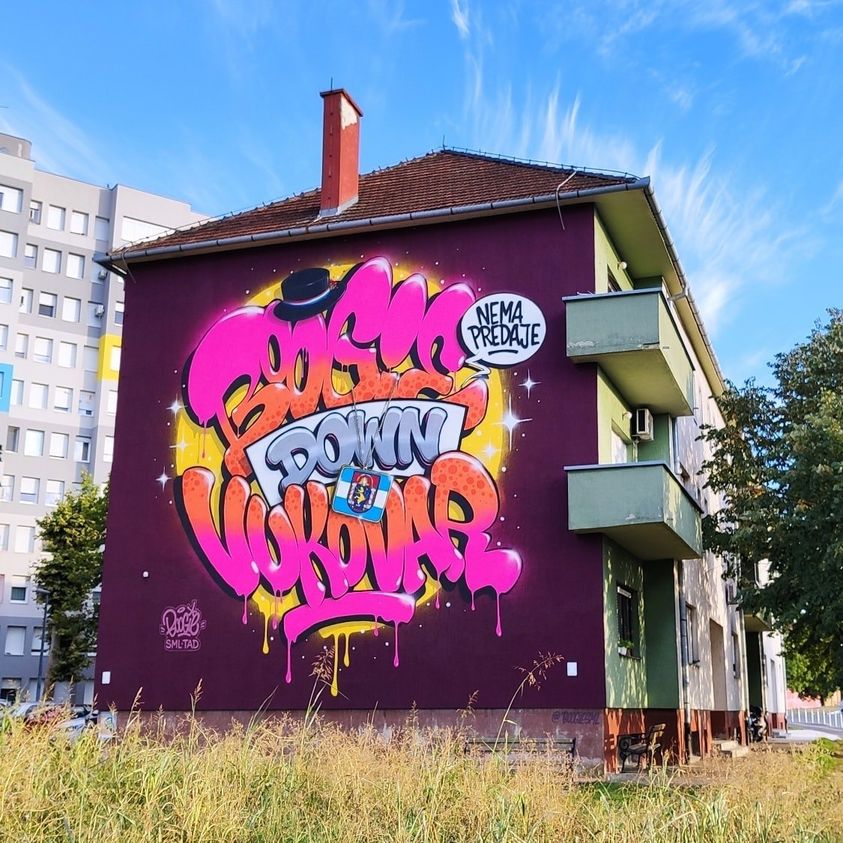
Boogie down Vukovar
Some 20 years ago, Boogie aka André Morgner formed the SML Crew in a region of eastern Germany not far from the Czech border. They've been active ever since, although Morgner himself moved to Switzerland. There, he's a now full-time artist, drawing his murals on walls of buildings, parks and offices, on commission for people like Google, Burton Snowboards and BMW. His pieces are vivid and contemporary in colour, but often take inspiration from the bragging tag work of vintage hip hop.
Tea Jurišić (Croatia)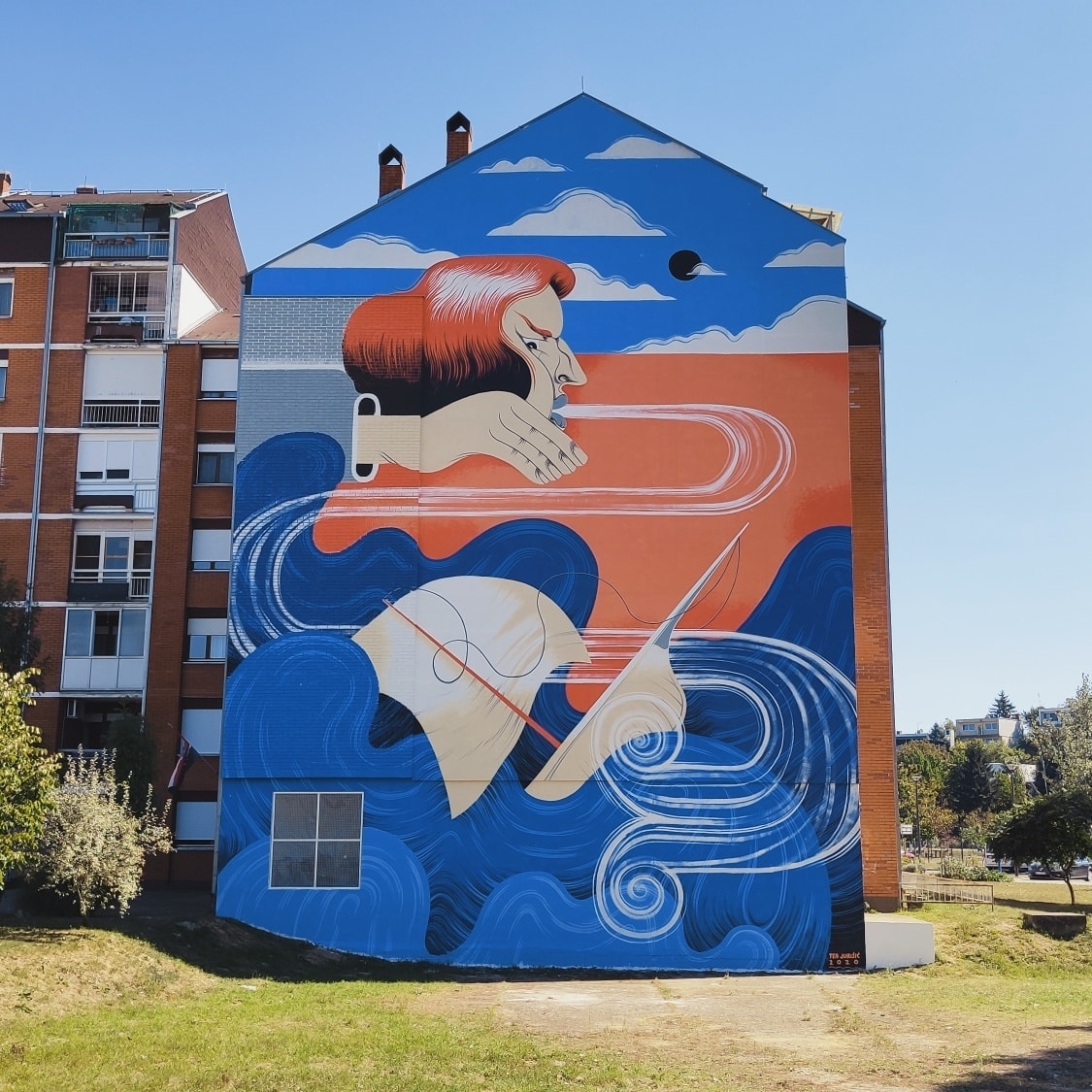
Bora
Having worked in many different modes of visual art, Tea Jurišić is, to many, known more for her drawings, paintings and illustrations than she is her street art. Yet, she has created various murals in Croatia, Slovenia, Italy and Norway. Since 2017 she has had 8 solo exhibitions in Croatia and overseas. She uses comedy and surrealism to add a playful edge to her simple storytelling.
"My challenge was a 300 square metre wall in the Olajnica neighbourhood, which I was painting between the 28th of August and the 3rd of September," said Tea. "The mural's name is Bora. It's the name of a fiercely strong wind that sometimes visits the coast of Croatia. I chose the name as I was trying to connect thematically two Croatian waters - the continental Danube river and the Adriatic sea. I relied on fresh colours that would bring a touch of summer to the gloomy days of winter that lie ahead. I tried to adapt the colours to the building, and the environment around the building. My experience in Vukovar was wonderful - from friendly people, a beautiful city and delicious food. It was an experience to remember for a lifetime."
Eugen Varzić (Croatia)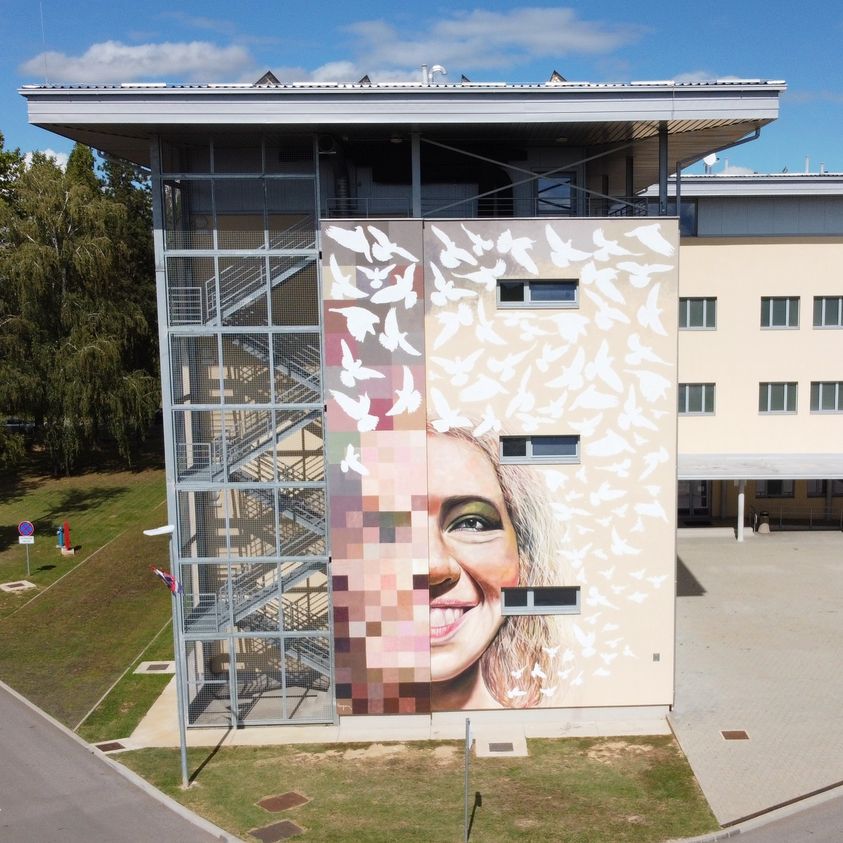
Future Freedom
A graduate of the Academy of Applied Arts in Rijeka, Eugen Varzić is something of a classicist operating inside wholly modern mediums. His paintings adorn city streets in Madrid, churches and the streets of his native Istria where, in Poreč, you'll also find his two mosaic sculptures, Trosjed and Konfin.
"This piece was a challange for me, because of the size, the positioning and the motif," Eugen said of his piece of Vukovar street art 2020. "The whole place used to be a military camp. After the fighting finished, they turned it into a memorial centre for the war, a kind of museum where you can see the planes, tanks, learn about Vukovar. Kids from all over Croatia come. There is a hostel where they can stay. When they asked me to paint this wall, because of where it is, that put some boundaries on my work. I had to think differently. This wall is not so easy to paint on – it's broken, it has windows, it's surrounded by steel, there are fire stairs."
"I decided on a half portrait of my daughter's smiling face. I wanted to show something happy and which looks forward into the future. Half of the face is pixalated, so it's clearly placed in the 21st century. I used squares within the piece because it's so connected to Croatia – you can see them on the shirts of the national team football players, on the Croatian flag. There are also 87 birds in the paintings. That number was chosen because there were 87 days of fighting before the town of Vukovar fell."
Arsek & Erase (Bulgaria)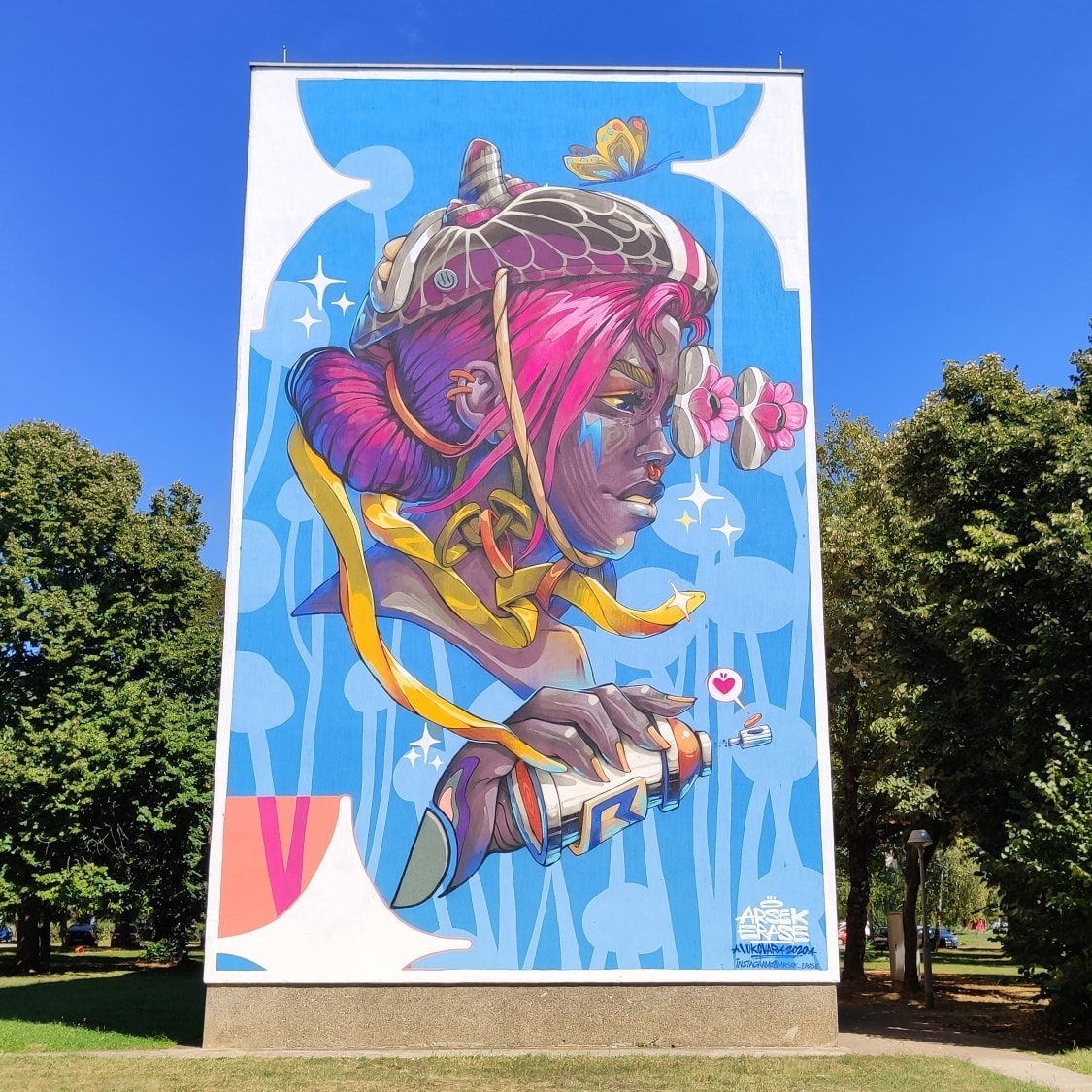
The Golden Snake
Operating as a duo for 20 years, Arsek & Erase create playful, bright and colourful images - and highly memorable characters - using illustration and surrealism. They have painted works all over Europe, their own native Bulgaria, and in Russia, China, Taiwan, El Salvador and the United States.
All photos Vukovar street art 2020 © VukovArt
For the latest travel info, bookmark our main travel info article, which is updated daily.
Read the Croatian Travel Update in your language - now available in 24 languages
Exhibition of the Week: 'Exquisite Growth' by Famous Zagreb Artist OKO
New artworks by OKO on display in new exhibition “Exquisite Growth” at French Pavillion.


